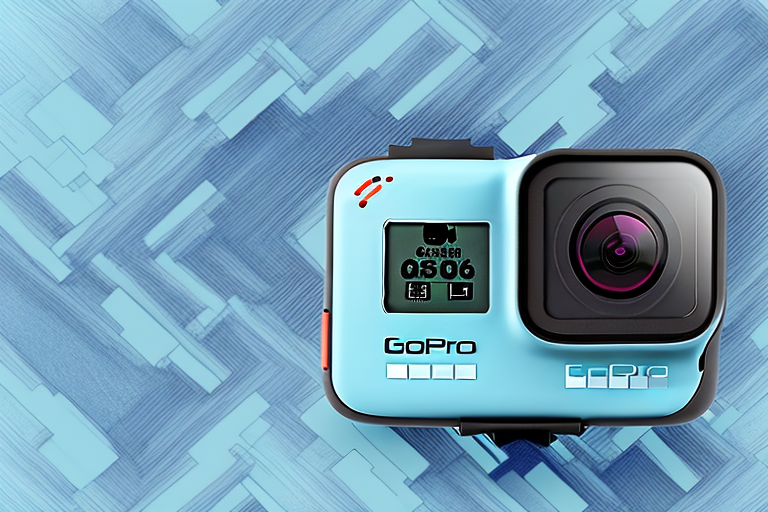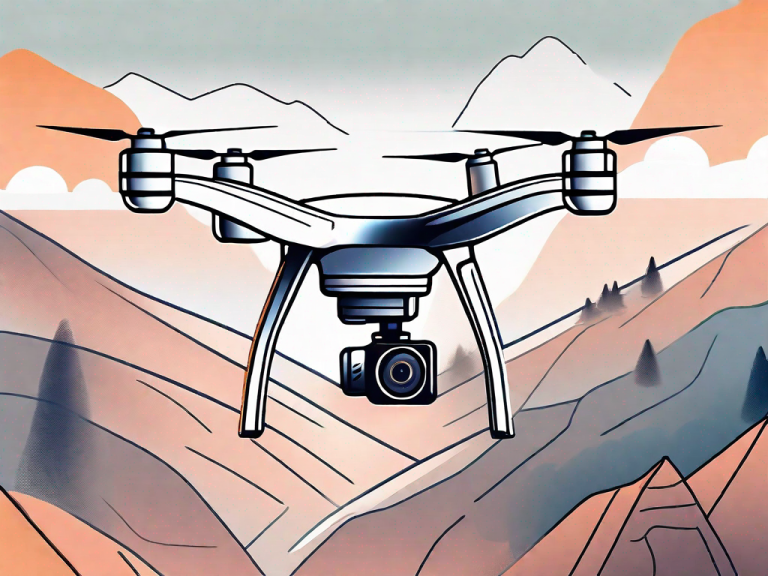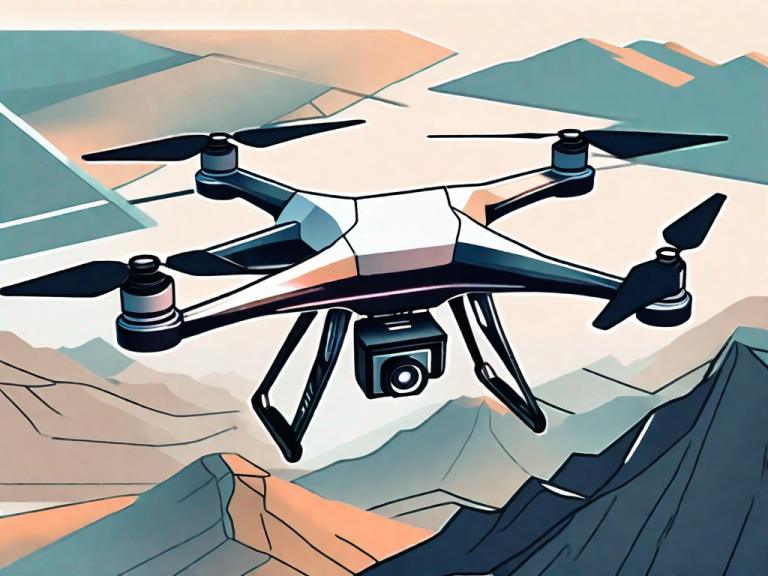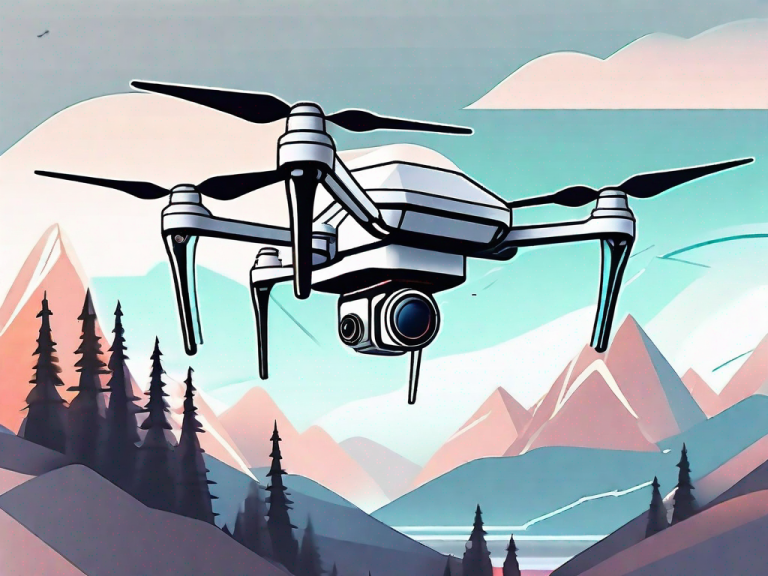In the world of action cameras, the GoPro Hero 6 is undoubtedly a top contender. Known for its stunning image quality and impressive video capabilities, it is a favorite among adventure enthusiasts and filmmakers alike. However, to truly unlock the potential of your GoPro Hero 6, you need to choose the right SD card – a task that might seem overwhelming given the plethora of options available in the market. In this article, we will explore the importance of selecting the right SD card for your GoPro Hero 6 and provide you with all the information you need to make an informed purchase decision.
Understanding the Importance of Choosing the Right SD Card for your GoPro Hero 6
When it comes to recording your adrenaline-pumping adventures or capturing those once-in-a-lifetime moments, the last thing you want is a subpar SD card that hampers your camera’s performance. The right SD card can not only enhance the efficiency and reliability of your GoPro Hero 6 but also ensure smooth video recording and seamless data transfer. On the other hand, a low-quality or incompatible SD card can lead to frustrating issues like dropped frames, corrupted footage, and even data loss. That’s why it’s crucial to understand the factors to consider when buying an SD card specifically tailored to the GoPro Hero 6.
One important factor to consider when choosing an SD card for your GoPro Hero 6 is the card’s speed class. The speed class determines how quickly the card can write data, which is crucial for recording high-quality videos and capturing fast-action shots. The GoPro Hero 6 is capable of recording 4K videos at a high frame rate, so it requires an SD card with a fast write speed to keep up with the camera’s performance. Look for SD cards with a UHS Speed Class of U3 or higher, as these cards are designed to handle the demands of 4K video recording.
What to Consider When Buying an SD Card for GoPro Hero 6
Before diving into the plethora of SD card options available in the market, it’s important to be aware of the key factors that should influence your decision. The first aspect to consider is the storage capacity required for your needs. The GoPro Hero 6 is compatible with SD cards ranging from 16GB to a staggering 256GB. Determine how much storage space you will need based on the length of your videos and the frequency with which you plan to offload the footage onto your computer or external storage. Additionally, considering the speed class rating of the SD card is crucial, as it directly impacts the camera’s performance during video recording and data transfer. The GoPro Hero 6 requires an SD card with a UHS-1 or UHS-3 rating.
Another important factor to consider when buying an SD card for your GoPro Hero 6 is the durability and reliability of the card. Since GoPro cameras are often used in rugged environments and extreme conditions, it is essential to choose an SD card that can withstand these challenges. Look for SD cards that are waterproof, shockproof, and temperature resistant, as they will provide added protection for your valuable footage. Additionally, consider brands that have a reputation for producing high-quality and durable SD cards, as they are more likely to deliver consistent performance and longevity.
The Compatible SD Card Options for GoPro Hero 6
When it comes to compatibility, the GoPro Hero 6 is compatible with a wide range of SD cards. However, it is recommended to choose cards from reputable brands that have been specifically designed and tested for use with GoPro cameras. Brands like SanDisk, Lexar, and Kingston offer a variety of SD cards that are known for their reliability and performance. Within these brands, you can find models such as the SanDisk Extreme, Lexar Professional, and Kingston Canvas that are highly recommended for the GoPro Hero 6.
One important factor to consider when choosing an SD card for your GoPro Hero 6 is the storage capacity. The camera supports SD cards with capacities ranging from 16GB to 256GB. If you plan on capturing a lot of high-resolution videos or taking a large number of photos, it is recommended to opt for a higher capacity card to ensure you have enough storage space.
In addition to storage capacity, another important consideration is the speed class of the SD card. The GoPro Hero 6 is capable of recording videos in 4K resolution at a high frame rate, which requires a fast and reliable SD card. Look for cards that have a UHS Speed Class of 3 (U3) or a Video Speed Class of 30 (V30) to ensure smooth and uninterrupted recording.
Exploring the Different Storage Capacities Available for GoPro Hero 6 SD Cards
When it comes to storage capacity, there are various options available to suit different recording needs. If you primarily capture short videos or prefer to transfer your footage frequently, a 32GB or 64GB SD card may suffice. However, if you engage in longer recording sessions or require extended storage for extended periods, 128GB or 256GB SD cards are more suitable. It’s important to note that higher capacity cards not only offer ample storage space but also ensure uninterrupted recording for longer durations.
Another factor to consider when choosing the storage capacity for your GoPro Hero 6 SD card is the video resolution and frame rate you plan to use. Higher resolution and frame rates, such as 4K and 60fps, require more storage space per minute of footage. Therefore, if you frequently shoot in high-resolution formats, opting for a larger capacity SD card is advisable to avoid running out of storage during your recording sessions.
In addition to storage capacity, it’s also essential to select a reliable and fast SD card for optimal performance. Look for SD cards that have high read and write speeds to ensure smooth recording and quick data transfer. This is particularly important when shooting in high-resolution formats or when using advanced features like time-lapse or burst mode.
Speed Class Ratings: How to Choose the Right SD Card for GoPro Hero 6
The speed class rating refers to the minimum sustained write speed of an SD card and is denoted by a number inside a capital “C” on the card. For the GoPro Hero 6, a minimum of Class 10 is recommended, as it ensures a consistent write speed of 10MB/s. However, to achieve optimum performance during high-resolution video recording or capturing fast-action footage, it is advisable to opt for UHS-I or UHS-III SD cards, which have significantly higher transfer rates.
UHS-I SD cards, also known as Ultra High Speed Class 1, have a minimum sustained write speed of 10MB/s, similar to Class 10 cards. However, UHS-I cards have the added advantage of faster read speeds, which can be beneficial when transferring files from the SD card to a computer or other devices.
On the other hand, UHS-III SD cards, or Ultra High Speed Class 3, offer even higher transfer rates, with a minimum sustained write speed of 30MB/s. These cards are ideal for professional photographers or videographers who require fast and reliable performance for continuous shooting or recording at high frame rates.
Comparing UHS-I and UHS-II SD Cards for GoPro Hero 6: Which is Best?
When it comes to UHS-I and UHS-II SD cards, the primary difference lies in the transfer speed. UHS-I cards offer a maximum transfer speed of 104MB/s, whereas UHS-II cards can reach up to a blazing fast 312MB/s. While both types of cards are compatible with the GoPro Hero 6, UHS-II cards provide a significant advantage if you frequently record high-resolution videos or engage in burst mode photography. However, it is essential to ensure that your GoPro Hero 6 is UHS-II compatible to fully harness the power of these cards.
In addition to the difference in transfer speed, another important factor to consider when choosing between UHS-I and UHS-II SD cards for your GoPro Hero 6 is the price. UHS-II cards tend to be more expensive than UHS-I cards due to their advanced technology and higher performance capabilities. If you are on a tight budget or do not require the fastest transfer speeds, UHS-I cards may be a more cost-effective option.
Furthermore, it is worth noting that the performance of UHS-II cards can be limited by the device they are used with. While the GoPro Hero 6 is compatible with UHS-II cards, not all devices support the full capabilities of UHS-II technology. Therefore, if you plan to use the same SD card with multiple devices, it is important to ensure that all devices are UHS-II compatible to fully maximize the benefits of these high-speed cards.
High-Quality Video Recording with the Optimal SD Card for GoPro Hero 6
To achieve high-quality video recording with your GoPro Hero 6, it’s crucial to select an SD card that meets the camera’s requirements. The ideal SD card should have a balance of ample storage capacity and a high-speed class rating. This combination ensures that your camera can record and store high-resolution videos seamlessly without any drop in frame rate or performance issues. Investing in a reliable SD card enables you to capture stunning visuals without compromising on the fluidity and clarity of your footage.
When choosing an SD card for your GoPro Hero 6, it’s important to consider the recommended specifications provided by the manufacturer. GoPro recommends using SD cards with a minimum write speed of Class 10 or UHS-I for optimal performance. This ensures that the camera can write data quickly and efficiently, allowing you to capture smooth and uninterrupted footage.
In addition to the speed class, it’s also worth considering the storage capacity of the SD card. The GoPro Hero 6 is capable of recording high-resolution videos, which can quickly consume storage space. Therefore, it’s advisable to choose an SD card with a larger capacity, such as 64GB or 128GB, to accommodate longer recording sessions without the need for frequent card changes.
Top Brands and Models of SD Cards Recommended for GoPro Hero 6
When it comes to reliable and trusted brands for SD cards, SanDisk, Lexar, and Kingston have proven themselves as industry leaders. The SanDisk Extreme and Lexar Professional Series SD cards are highly recommended for their exceptional durability, speed, and compatibility. Brands like Kingston also offer a wide range of SD cards, including the Kingston Canvas React series, which provide excellent performance and reliability for the GoPro Hero 6. While there are other reputable brands available, opting for these recommended models ensures the highest level of compatibility and performance with your GoPro Hero 6.
In addition to SanDisk, Lexar, and Kingston, another top brand of SD cards recommended for the GoPro Hero 6 is Samsung. Samsung offers a range of SD cards, including the Samsung EVO Plus series, which are known for their fast read and write speeds, making them ideal for capturing high-quality video footage with the GoPro Hero 6.
It is important to note that when choosing an SD card for your GoPro Hero 6, it is recommended to select a card with a minimum Class 10 or UHS-I rating to ensure smooth recording and playback of your videos. Additionally, it is advisable to choose an SD card with a higher storage capacity, such as 64GB or 128GB, to accommodate the large file sizes produced by the GoPro Hero 6’s high-resolution video capabilities.
Tips and Tricks to Maximize Performance and Lifespan of your GoPro Hero 6 SD Card
To make the most out of your GoPro Hero 6 SD card, it’s essential to follow some best practices that maximize performance and extend its lifespan. First and foremost, always format your SD card using the camera’s formatting feature to ensure compatibility and optimize the card for optimal performance. Avoid removing the card while the camera is in operation to prevent potential data corruption. Additionally, it’s a good practice to periodically transfer your footage to an external storage device or computer to free up space. Lastly, keep your SD card clean and protected from physical damage and extreme temperatures, as these factors can significantly impact its longevity and performance.
Troubleshooting Common Issues with SD Cards on GoPro Hero 6
While GoPro Hero 6 SD cards are generally reliable, occasional issues may arise. If you encounter problems like slow transfer speeds, corruption, or data loss, there are a few troubleshooting steps you can try. Firstly, ensure that the SD card is properly inserted into the camera and that the card slot is clean and free from debris. If the problem persists, formatting the card using your computer or performing a manual firmware update on the camera may resolve the issue. However, if the problem continues, it may be necessary to contact customer support for further assistance.
How to Safely Format and Transfer Data on your GoPro Hero 6 SD Card
Properly formatting and transferring data on your GoPro Hero 6 SD card is crucial to ensure data integrity and avoid potential issues. To format the SD card, access the camera’s settings menu, navigate to the “Preferences” option, and select “Delete.” From there, choose “All” to format the SD card entirely. When transferring data from your SD card, connect it to your computer using a reliable card reader or use the GoPro Quik app to offload your footage. Always make sure to safely eject the card or close the application before removing it to prevent data corruption.
The Pros and Cons of Using Different Types of SD Cards in your GoPro Hero 6
While there are various SD card options available for the GoPro Hero 6, each type has its own strengths and drawbacks. Class 10 SD cards offer a minimum write speed of 10MB/s, which is essential for smooth video recording. However, if you require faster transfer rates and better performance, UHS-I and UHS-II SD cards are more suitable options. While UHS-II cards provide significantly higher transfer speeds, they may come at a higher price point. Consider your specific recording needs and budget when choosing between these types of SD cards.
Enhancing Storage Efficiency: Managing Files on Your GoPro Hero 6 SD Card
To enhance storage efficiency and ensure optimal performance, it’s important to manage the files on your GoPro Hero 6 SD card effectively. Start by creating separate folders for different shoots or events, which will make it easier to organize and locate your footage later. Periodically review and delete unnecessary files to free up space on your SD card, ensuring that you have ample storage for upcoming shoots. Additionally, consider investing in an external hard drive or cloud storage to create backups of your valuable footage, further optimizing storage efficiency.
Protecting Your Data: Backup Options for your GoPro Hero 6 SD Card
Accidents can happen, and losing valuable footage due to a faulty SD card or unforeseen circumstances can be devastating. That is why it is crucial to have a backup solution in place. One option is to transfer your footage to an external hard drive or a computer. Alternatively, you can use cloud storage services like Dropbox or Google Drive to automatically back up your files. By creating multiple copies of your data, you can ensure that your precious moments are safe and secure, even in the event of SD card failure or loss.
Conclusion
Choosing the right SD card for your GoPro Hero 6 is instrumental in ensuring optimal performance, smooth video recording, and reliable data transfer. By understanding the factors to consider, such as storage capacity, speed class, and brand reliability, you can make an informed purchase decision and capture breathtaking footage without any hiccups or compromises. Remember to follow best practices for managing and protecting your SD card, and always be prepared with backup options to safeguard your invaluable footage. With the right SD card by your side, your GoPro Hero 6 will unleash its full potential, allowing you to capture and relive your adventures like never before.









